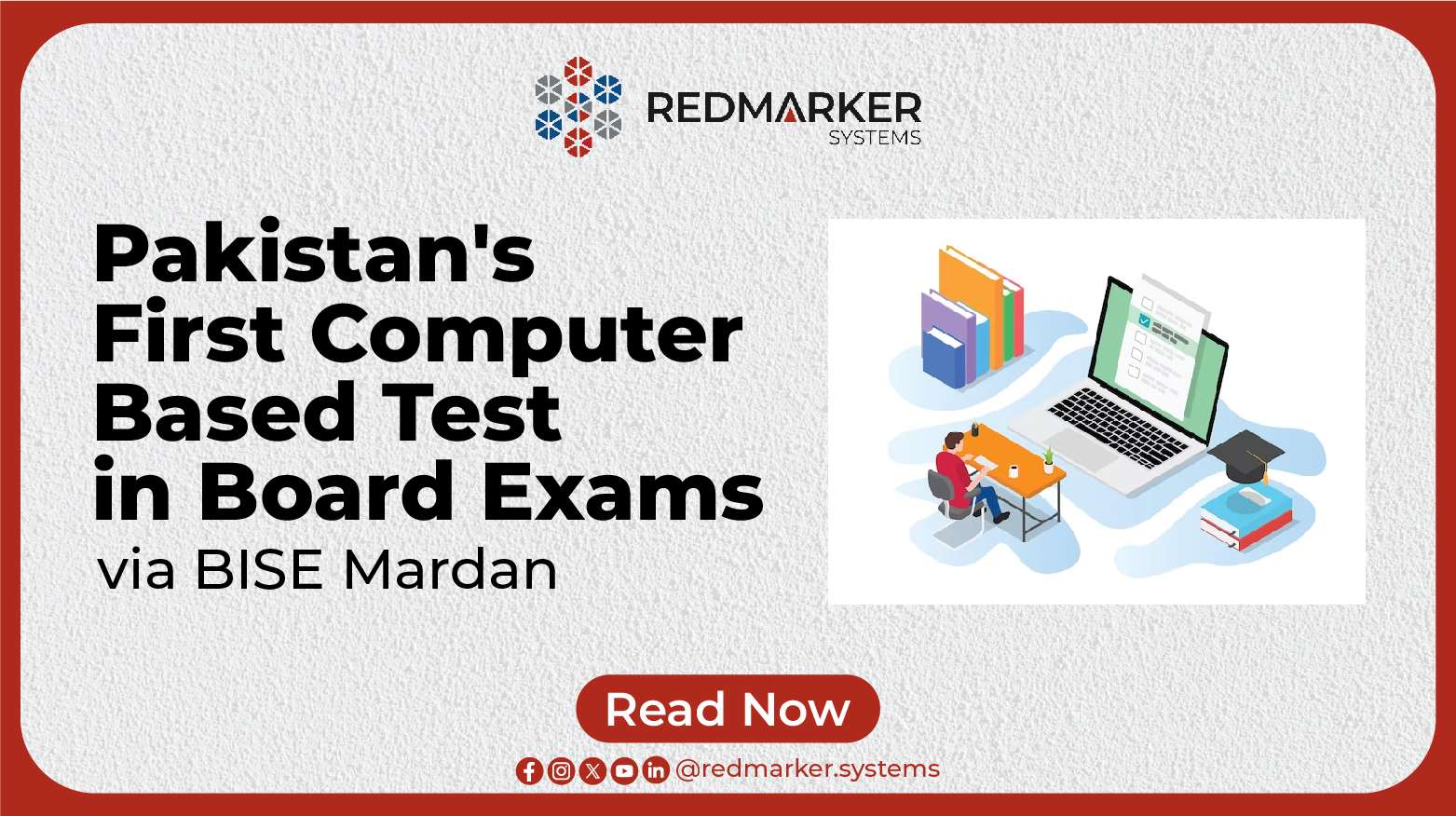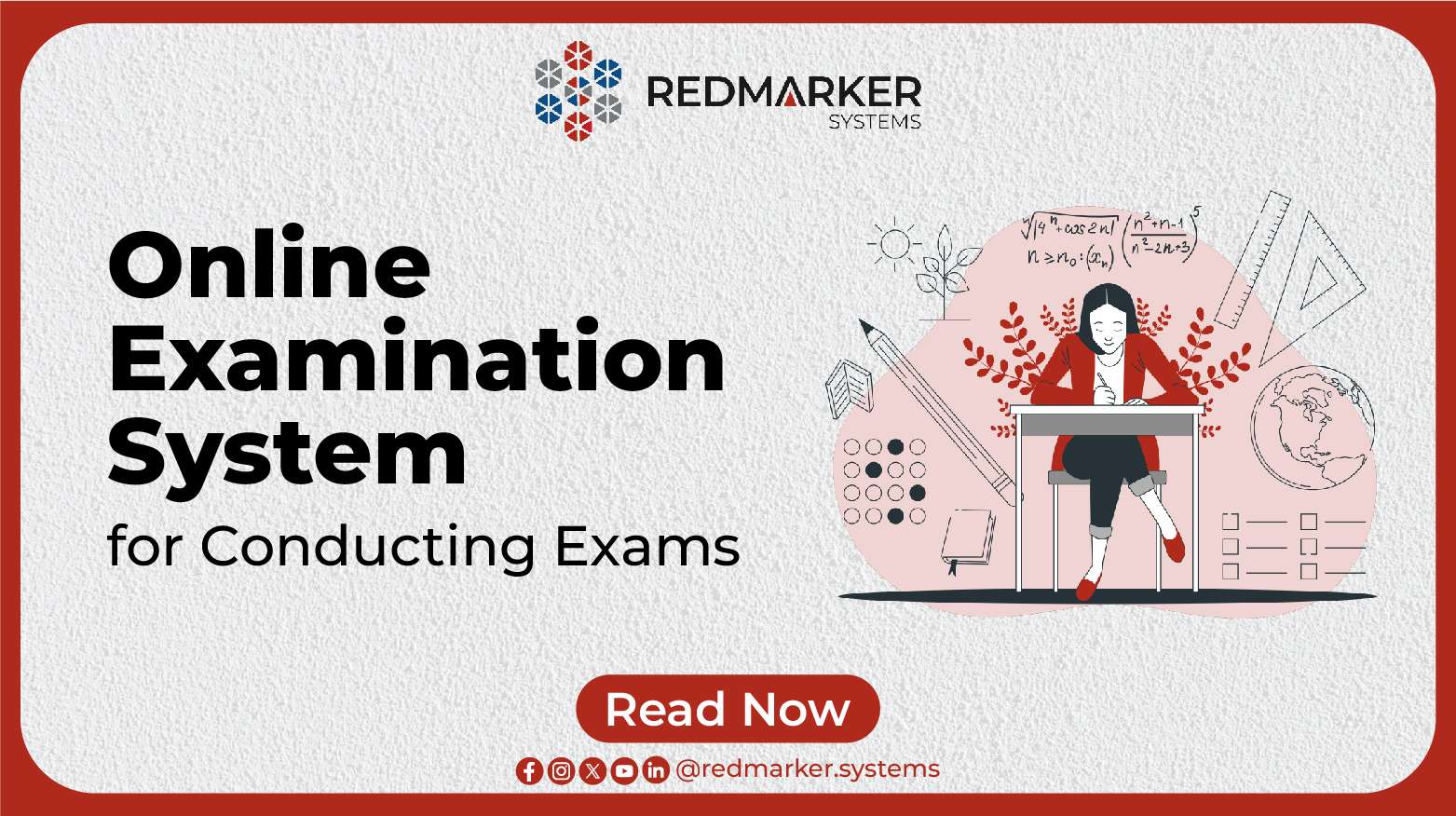In the age of digital transformation, where technology is reshaping every aspect of our lives, the field of education is no exception. Digital assessment, a concept that seemed futuristic not too long ago, has become an integral part of the education landscape. Leading this transformation in Pakistan is RedMarker Systems, an innovative EdTech company with a mission to revolutionize the examination system in the country. In this blog post, we will delve into RedMarker Systems’ journey and explore how their products are making a significant impact on the education and assessment landscape in Pakistan.
RedMarker Systems: Pioneers of Digital Assessment
RedMarker Systems is at the forefront of the digital assessment revolution in Pakistan. Their commitment to bringing innovation and technology to the assessment process has positioned them as leaders in the EdTech industry. Their primary goal is to transform traditional examination systems by deploying cutting-edge technology and a highly skilled workforce. RedMarker Systems offers a comprehensive suite of products and services designed to streamline and enhance the assessment process.

RedMarker’s Product Lineup
rTestGen: rTestGen is an innovative test generation tool that empowers users to create high-quality, secure, and perfectly aligned assessments. It not only saves time but also ensures that assessments meet the highest standards of quality and security.
rMarker: rMarker is an online test marking platform that allows educators and institutions to evaluate assessments quickly and accurately. This tool has the potential to revolutionize the grading process, reducing the workload on teachers while improving the speed and precision of feedback.
rCBT (Computer-Based Testing): rCBT is a computer-based testing platform that has paved the way for secure and efficient remote examinations. It addresses the challenges of traditional paper-based tests, making assessments more accessible and transparent.
Farda: Farda is a self-assessment app designed to help students identify their strengths and weaknesses. It also enables them to track their progress over time, fostering a culture of continuous improvement.
The Impact of RedMarker’s Products
RedMarker’s products are making waves in various educational settings in Pakistan. From schools to universities, colleges, and even corporate organizations, these tools are being embraced for their transformative potential.
In Schools
Many schools in Pakistan have adopted rTestGen to generate tests for their students. This shift has significantly improved the quality and consistency of assessments across the country. Teachers can now focus on teaching, knowing that they have access to a tool that ensures assessments are of the highest standard.
In Universities
Several universities in Pakistan have integrated rMarker into their assessment processes. This platform has not only reduced the workload on teachers but has also expedited the feedback loop for students. Assignments are marked quickly and accurately, providing students with timely insights into their performance.
In Colleges
The introduction of rCBT in college entrance exams has streamlined the admissions process. It has made it more efficient, transparent, and accessible to a wider pool of students. The move towards digital assessments is a step forward in modernizing education and making it more inclusive.
In Corporate Organizations
RedMarker’s products aren’t limited to educational institutions. Corporate organizations in Pakistan are utilizing rMarker to assess the skills and knowledge of their employees. This has enabled them to identify and develop their top talent effectively, ensuring a competitive edge in the ever-evolving business landscape.
Government Collaboration
RedMarker Systems has been instrumental in partnering with the Pakistani government on several projects aimed at digitalizing the assessment system. One such project involves developing a computer-based testing platform for the National Testing Service (NTS). This collaboration underscores the government’s recognition of the importance of technology in education and assessment.
Case Studies: Transforming Assessment
Let’s dive deeper into a few case studies that illustrate how RedMarker’s products have transformed the assessment process, particularly in the context of Annual Board Exams conducted by the Board of Intermediate and Secondary Education (BISE), Peshawar.
Case Study 1: BISE Peshawar’s Transition to rTestGen and rMarker
BISE Peshawar was grappling with a traditional paper-based assessment system for Annual Board Exams, which proved to be time-consuming and inefficient. Ensuring assessment consistency and security was a challenge. However, by switching to RedMarker’s rTestGen and rMarker products, BISE Peshawar improved assessment quality and consistency while significantly reducing the workload on teachers.
Case Study 2: Speeding up Assignment Marking
BISE Peshawar used a manual system to mark students’ assignments for Annual Board Exams, resulting in slow and inefficient processes with accuracy concerns. The introduction of RedMarker’s rMarker product dramatically reduced turnaround times for feedback and improved the precision of marking.
Case Study 3: Streamlining Skill Assessment
BISE Peshawar was conducting paper-based tests to assess the skills and knowledge of students appearing for Annual Board Exams. This traditional approach was time-consuming, inefficient, and vulnerable to cheating. However, the adoption of RedMarker’s rCBT product streamlined the assessment process, enhancing efficiency and reducing the risk of dishonest practices.
Benefits of Using RedMarker’s Products
The advantages of incorporating RedMarker’s products into the Annual Board Exams conducted by BISE Peshawar are multifold:
Improved Efficiency: RedMarker’s tools streamline the assessment process, freeing up valuable time for educators and institutions. For instance, rTestGen generates tests swiftly, while rMarker expedites marking, allowing staff to focus on other essential tasks.
Enhanced Security: RedMarker’s products are designed with robust security measures to maintain assessment integrity. rCBT, for example, safeguards exams from unauthorized access and ensures honest student participation.
Increased Accessibility: Digital assessments, particularly rCBT, make Annual Board Exams more accessible to students. This is a significant benefit for those residing in remote areas or students with disabilities.
Improved Data Analytics: RedMarker’s products provide detailed data analytics, offering insights into student performance. rMarker, for instance, equips BISEP with comprehensive reports that facilitate the development of targeted interventions to support students effectively.
Conclusion
RedMarker Systems is setting a new standard in digital education within Pakistan. Their innovative products and services are not just streamlining the assessment process but also enhancing its quality, security, and accessibility. The success stories of institutions like BISE Peshawar underscore the transformative power of RedMarker’s solutions.
As technology continues to advance and the Digital Assessment landscape evolves, RedMarker Systems is leading the way, ensuring that the examination systems in Pakistan are not just keeping up with the times but setting the pace for the future of education assessment. With their commitment to excellence and innovation, RedMarker Systems is truly Shaping the Future of Education in Pakistan, one assessment at a time.


